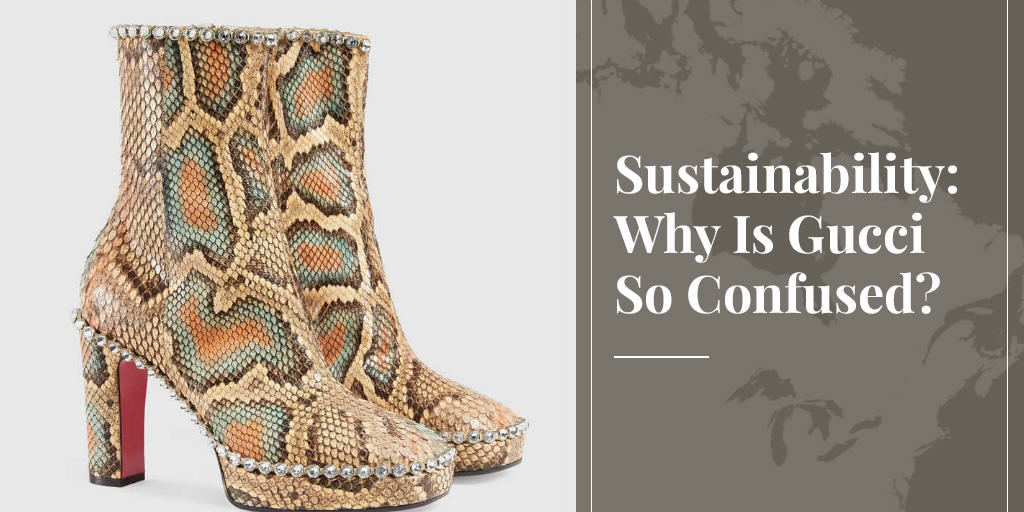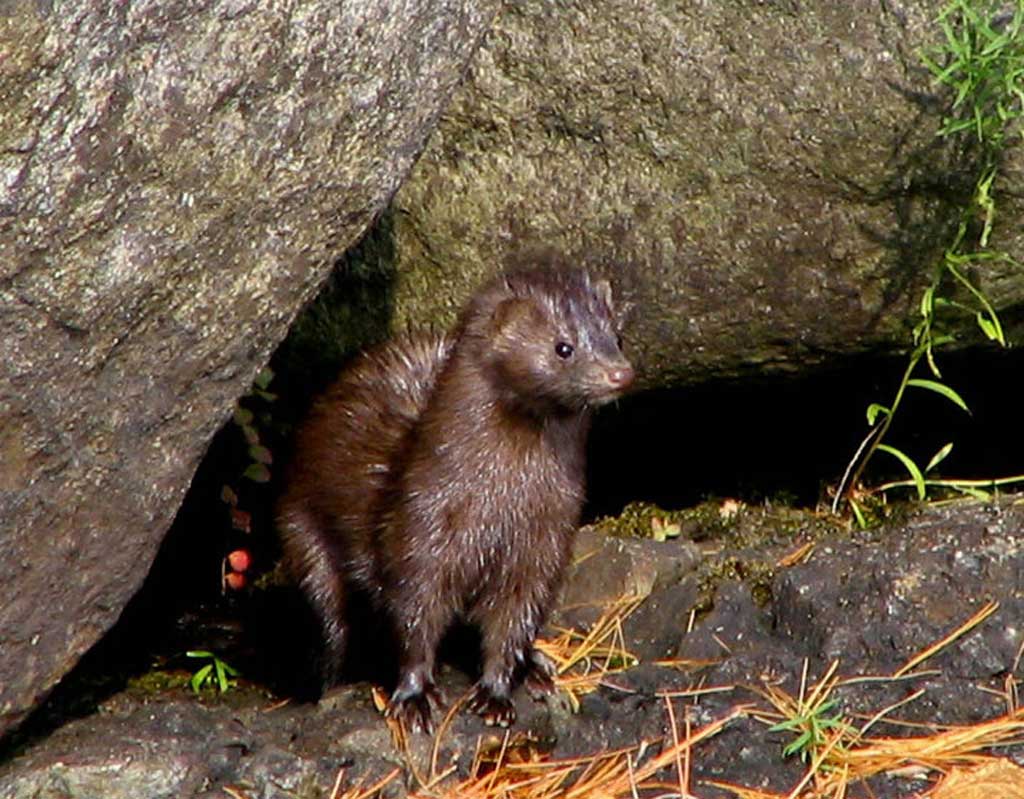
In the modern field of conservation, sustainable use is the goal for which resource managers strive. Yet not so long ago, conservation was popularly associated not with sustainability, but with not using resources at all. Perhaps inevitably, along the way some lazy thinkers came to equate sustainable use of a resource with not using it, among them Gucci CEO Marco Bizzarri.
When Bizzarri announced recently that Gucci would be dropping fur, he caused much head-scratching. The move was a demonstration of “our absolute commitment to making sustainability an intrinsic part of our business,” he explained. So Gucci will now be replacing real fur – a renewable, biodegradable, natural resource – with non-biodegradable fake fur made from a non-renewable resource, petroleum.
How could Gucci have become so confused about the meaning of “sustainability”? History provides a possible answer.
SEE ALSO: Fur-free Gucci policy contradicts company’s “sustainability” claims.
Protection vs. Conservation
Forty years ago, when Marco Bizzarri was growing up, and after a long history of renewable natural resources being mismanaged in much of the world, the word “conservation” was on everyone’s lips.
But what did “conservation” mean to most of the public or, in practical terms, on the front lines of the war declared on alleged resource abusers?
The biggest “conservation” issue of the day – the biggest ever in terms of public awareness – was whaling, and groups that formed the Save the Whale Campaign called themselves conservationists. A very few were the real deal, but most were actually perpetrating a deception. They were not interested in sustainable use, or a temporary cessation of whaling to allow stocks to recover. They wanted all whaling stopped forever, regardless of the state of stocks. They were “protectionists”, or, to use a term more commonly associated with wilderness protection, “preservationists”.
And so the die was cast. In the popular conscience, “conservation” had come to mean not using something, be it whales, seals, ivory, tuna or tropical rain forests. The list just grew as “Save the [enter pet cause here]” campaigns proliferated. Stopping the killing of any animal, correctly termed protection, was now widely perceived by much of the media and the general public as a conservation goal.
From Conservation to Sustainability
Meanwhile, true conservationists were developing increasingly sophisticated management strategies based on a relatively new concept, the “sustainable use of renewable natural resources”.
An integral part of sustainable use is that conservation objectives are often best served by giving renewable resources financial value, thereby giving stakeholders an incentive to manage them wisely. For many species of animal, the most effective way of doing this is to allow regulated killing for food or clothing. Captive breeding and even domestication of animals can also help relieve pressure on wild populations. Gucci’s parent group, Kering, is actively involved in a programme to conserve pythons by farming them. Ted Turner’s bison ranches have played a key role in bringing this animal back from the brink of extinction. And yes, all wild species of furbearers have benefited from the expansion of mink farming.
In short, sustainable use is founded on the consumptive use of resources in a regulated environment. It gives the resources value to stakeholders, while ensuring use of those resources does not exceed their capacity to replenish themselves.
Sustainable use is not about stopping use of a resource.

Gucci Left Behind
Gucci’s understanding of “sustainability” appears to be based on an outdated, 1970’s view of conservation: that the best way to conserve a resource is to stop using it.
For sure, some furbearer species were hit hard by hunting and trapping before modern regulations were implemented, even in North America. And some, such as South American and African spotted cats, are now – rightly – banned in international trade.
But to imply, as Gucci does, that farmed mink and fox, or abundant wild populations, will somehow benefit by no longer being used for fur shows a naîve and total misunderstanding of how sustainable use works.
Gucci has been left behind as our knowledge of environmental conservation has evolved. We don’t need a Save the Mink campaign!











How is an animal rights activist a nut job? When humans poison the planet with toxins, wipe out species, bring other species close to extinction, destroy habitats….I fail to see the argument that an animal activist is a nut job. What do you think our grandchildren will have when we have hunted animals to extinction and reduced forests to a few acres, all for greed? The only nut job is you.
Hi Mark, what you describe here are conservation goals, unrelated to animal rights goals. The animal rights philosophy is not concerned with conserving species or habitat, but with having society recognise rights for animals.
I understand that. What is wrong with animals having rights? What gives humans the right to abuse and torture other species for own purpose? What is humanity? What does that mean to you? Is it right to torture an animal for some fur trim? And not to at least consume the meat as well? There was a time when humans legitimately hunted animals for survival. Now it is for greed and sport. Poor animals. Where is our humanity?
That’s a whole other issue, Mark, and has nothing to do with Gucci’s claim of “sustainability”. Let me just take issue with your use of the word “torture”, since this is so often heard from animal rights proponents. People who produce food and clothing from animals never “torture” those animals, and if they did, everyone would condemn them. Torture involves the intentional inflicting of pain – mental or physical – in order to extract information or simply for the sake of causing suffering, whether for revenge or out of a sadistic tendency. So please stop using this word. It’s really misleading.
If animals had rights we would not be able to keep them for pets, use them for medical research, eat them, or wear them. We would need to stop driving as people would go to jail for murder in the case of roadkill. We wouldn’t be allowed to kill cockroaches in our home. Giving animal rights is absurd and ridiculous. And to suggest we are all killing animals for “greed and sport” is ridiculous. I don’t wear a fur coat for greed or sport. I wear it because it keeps me warm, and I would rather wear a sustainably harvested animal skin than something made of petroleum.
Another great read. They’re probably so confused because someone within Gucci is listening to the animal rights nut jobs too.